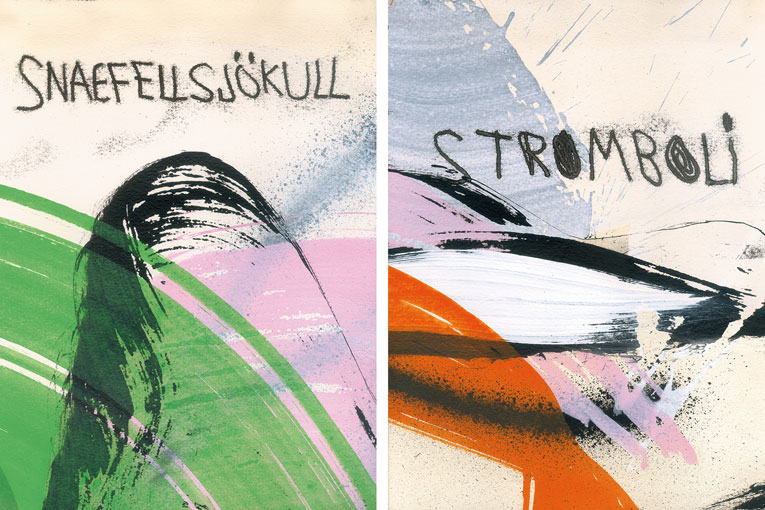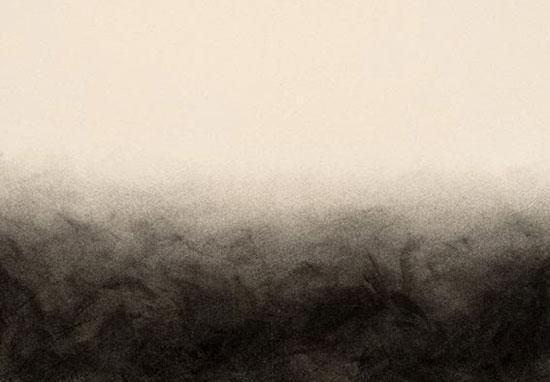
|
|
||
|
The mysterious surroundings of Alcoi still hid one more secret: it is a land of volcanoes. At least one, which allowed Arthur Caravan to descend into the depths of the earth, after he wrote a score for the universe. They are wisely led now by a voice that would make continental plates tremble if he tried, Hugo Mas. The crème de la crème of Alcoi music exports allied to bring us Wegener (Música de Telers, 2013), a dense and solemn album that goes as deep as the listener wants to dig. A brave proposal that does not yield easily and stands out due to Hugo Mas’s literary work. Among the many layers of Wagener’s sound, we find a lot of crystalized remains, cross-references to science and literature that intertwine in a journey to get our hands dirty, go into the misery and conflict of the days we are living. Journey to the Centre of the Earth is the most obvious reference in the album, as stated by its first track, Snæfell (the Icelandic volcano where the characters in Verne’s novel start their fantastic journey). It was curiosity and scientific zeal that brought Professor Lidenbrock and his nephew Axel to their great subterranean expedition. What brought Hugo Mas to the muddy field of geological language was the need to find physical correspondence to the emotions he wanted to sing. «I recognise I am a materialist, in the sense that I try to find a material and economic explanation to sociological events, for instance. And very material in that I look for a tangible reference in things that apparently escape from that sphere», the musician explains. Wegener drinks also from another source novel, the lysergic Etidorhpa by pharmacist John Uri Lloyd. A post-Verne novel relating yet another journey to the centre of the Earth, spiced in this occasion with freemasons and parascience plot points. «It is an unpleasant, yet attractive book for me. There is a contrast with Jules Verne’s attitude, more scientific and visionary, but I recognise he gave the novel that emotional side that Verne’s novel was missing», Mas allows. The third literary reference in the album is The Black Book, the surrealism-inspired novel by Lawrence Durrell, brother of naturalist and science communicator Gerald Durrell. The track Agon, an adaptation of the first passage of the text, is an apocalyptic look to «a society full of fighting, clashing, violence and dormant or active conflict», in the musician’s words. But not everything is literature. Despite his commitment to poetry, Hugo Mas can be considered a man of science: he trained as a forestry engineer and has worked in a diagnose and research laboratory of entomology for almost a decade: «Science method seemingly marks my life at all moments. I flee from reason and scientific order through poetry, but I am not really able to escape». Maybe that is the reason to name the album after scientist, meteorologist and geophysicist Alfred Wegener, who advanced the theory of continental drift. An important man in Hugo Mas’s career, who peaked his interest in plate tectonics from an artistic perspective when he was just twelve. |
«Among the many layers of Wagener’s sound, we find a lot of crystalized remains, cross-references to science and literature that intertwine in the journey»
«What brought Hugo Mas to the muddy field of geological language was the need to find physical correspondence to the emotions he wanted to sing» |
|
 Andreu Valls Andreu VallsDetail of the cover of Wegener (Música de Telers, 2013), the shared album by Arthur Caravan and Hugo Mas, designed by artist Andre Valls. |
«Science method seemingly marks my life at all moments. I flee from reason and scientific order through poetry, but I am not really able to escape» Hugo Mas |
|
|
Besides Alfred Wegener, the album pays tribute to other scientists. Music intermissions are named after the different discontinuities on Earth’s structure, named in turn after the seismologists who discovered them. Therefore, we find, from the most shallow to the deepest one, Discontinuïtat de Conrad (Conrad discontinuity, a second order discontinuity), Discontinuïtat de Mohorovičić (Moho) (Mohorovičić discontinuity), Discontinuïtat de Gutenberg (Gutenberg discontinuity) and, lastly Discontinuïtat de Lehmann (Lehmann discontinuity), the one separating the liquid external core and the solid internal core of the Earth. Even if the titles are not purely educational, Hugo Mas considers they are suggestive enough to stimulate curious minds. That is, if they make an effort themselves. As Mas observes: «An important feature of this work is that we tried to create an album for active listeners, not passive ones». Science and Imagination «My imagination fell powerless before such immensity», Axel Lidenbrock said during his Journey to the Centre of the Earth, when he discovered an ocean under Earth’s surface. Soon after that, when he observes how the waters of that ocean answer to universal gravitational laws and have tides, the young man exclaimed: «This is wonderful!». «No; it is quite natural», his uncle answers. Hugo Mas finds in these brief sections a good representation of the relationship between science and imagination: «I always believed our imagination is not much more powerful than nature. It seems our dreams, our imaginary worlds and our emotions are always a metaphor of the world we live in, a world with an extreme complexity of which we only understand a small portion», he explains. And he gives a very illustrative example: «It’s all the same to me if I tell my son a story about a strange and surprising extraterrestrial being or I just put a Mantis religiosa on his hands. The difference is with the tale I excite his imagination and with the praying mantis I give credibility to whatever he can imagine». For someone with such a particular vision of science, music should be a good way to communicate it: «If music has not been a good vehicle for science communication before, that is because musicians have not used it with that end in mind. Such a thing is not at all irreversible», he concedes. Wegener is clear proof thereof. Something to listen to: Something to read: Felip Pineda. Journalist. Mètode journal, University of Valencia. |
|
|

 Juan Olivares
Juan Olivares



